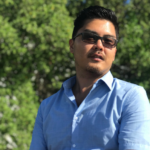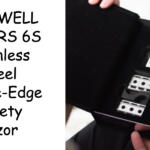
Ditch the endless cycle of flimsy plastic razors and cartridges destined for the landfill. A safety razor isn’t just a superior shave; it’s a smart, sustainable investment that can last you a lifetime … sometimes even longer! This comprehensive guide delves into the incredible longevity of safety razors, explores the factors that influence their lifespan, and teaches you how to make yours a multi-generational grooming heirloom.
The Durability Difference
If you’ve only ever used disposable razors or their cartridge brethren, you may be surprised by the heft and solidity of a safety razor. It’s a substantial tool, crafted from materials far sturdier than plastic. While disposables are synonymous with flimsy and fragile, a safety razor conveys a sense of permanence. Unlike flimsy plastic handles designed to fail, a safety razor is built to endure. Its very construction promises generations of reliable shaves rather than quick obsolescence.
Material Matters
The most widely used materials in safety razor construction offer different benefits and potential drawbacks:
Stainless Steel
This reigns supreme for its excellent mix of rust resistance, strength, and overall durability. Quality stainless steel stands up to regular water exposure, minor mishaps like the occasional drop, and requires minimal special maintenance. While higher in initial cost, consider it a wise investment due to its potential for lifelong use.
Brass
This readily available metal offers a classic look and is often an excellent value. While generally strong, brass may develop a patina with age, which some users find desirable but signifies a slight susceptibility to corrosion if not properly dried. When cared for, brass delivers on quality within its expected lifespan.
Zinc Alloy (Zamak)
Typically found in low-cost safety razors, this material has its limitations. Although it can provide an excellent entry point into traditional shaving, zinc alloys are prone to damage, breakage, and have the shortest potential lifespan when compared to other metals.
Other Materials
High-end or specialized razors sometimes boast more unique materials. Aluminum offers lightness, titanium exceptional strength, and even exotic woods offer warmth and distinctive appearance. While less common, researching their individual durability properties is crucial if these less standard materials interest you.
Material plays a key role, yet it’s not the whole story. Finishes also matter. Chrome plating increases durability and scratch resistance across metals, and additional surface treatments can prolong lifespans too. It’s worth consulting specific manufacturer specs before investing in a model, especially those less commonplace materials or finishings.
Craftsmanship Counts

Beyond generic ‘quality’, let’s dive deeper into the specifics of how a safety razor’s construction impacts its longevity:
- Precision Matters: Mass-produced razors often lack the finer tolerances achieved by meticulous machining or handcrafting. A precision-made razor ensures components engage smoothly with proper thread tension. This not only improves comfort but also protects parts from uneven wear that prematurely strips threads or leads to premature breakdown.
- The Weakest Link: Even if made from premium materials, every razor is potentially as weak as its cheapest or most poorly designed component. Mass-produced handles may fail even if the head is sturdy if the threads connecting them are flimsy or prone to damage.
- Durability In Design: Some razors feature simplified construction with fewer moving parts, inherently minimizing failure points. Conversely, overly complex designs, while appealing from a novelty standpoint, introduce more variables and possibilities for breakage down the line.
- The Importance of Reputation: When committing to a safety razor, researching a brand or specific model is crucial. Look beyond materials into a company’s track record for addressing warranty issues or providing replacement parts. This indicates a belief in their product’s durability and ability to handle real-world use.
Investing in good craftsmanship isn’t solely about enjoying smooth, snag-free shaves today. It’s fundamentally investing in a tool whose quality can be measured in years and decades, not just mere months.
Razor ‘Lifekillers’
Even the most meticulously built safety razor needs protection from common hazards. It’s not just about avoiding major drops or mishaps; consider these insidious habits that can steal years from your trusty razor:
Enemy Number One: The Drop & Its Aftermath
Bathroom tile and porcelain sinks don’t play nice with metal! Accidental drops, especially from a significant height, can cause unseen fractures, bend metal components, or misalign mechanisms. And it’s not always immediately visible: damage may show up later in stripped threads, increased blade movement, or simply pieces breaking off mid-shave. Handle your razor with respect, especially when your hands are wet, and always have a designated rest spot with some ‘give’ to it.
Damp Storage Disaster
Ever forgotten your razor on the wet counter or tucked it away damp in a drawer? Repeated moisture exposure accelerates corrosion and rust, a process that eats away at your razor from the inside out. Thorough drying after each use isn’t just an immediate comfort issue, it’s a major contributor to long-term usability. A razor stand promotes airflow and evaporation, minimizing risk.
Travel Hazard
Tossing your razor directly into a bag, whether for weekend trips or daily gym commuting, may invite damage beyond unsightly scratches. Impacts, awkward pressure, and the jostling of loose change or sharp objects within a bag can ruin precision. A simple hard-shell case or even just wrapping the razor in a protective material makes a huge difference over time.
Misuse as a Multitool
A safety razor has ONE job – delivering smooth, close shaves. Attempting to use it for anything else risks disaster. It may sound outlandish, but it happens – prying open sealed bottles, scraping off adhesive, or serving as a last-minute screwdriver! Resist that impulse. Respect your razor for what it does well and it will serve you much longer.
Additional Threats
Consider water hardness in your area – extreme mineral content can leave buildup on your razor over time. Additionally, avoid exposing your razor to extreme temperature swings; rapid expansion and contraction aren’t kind to precisely engineered components.
Care and Maintenance for Razor Longevity
While less involved than some intricate hobbies, a bit of basic upkeep goes a long way. Think of it as an investment that directly adds years to your safety razor’s lifespan. These habits aren’t solely cosmetic, they impact functionality down the line:
- The Post-Shave Rinse: Immediately after shaving, thoroughly rinse your razor with hot water. This removes any remnants of shaving cream, stubble, and hard water that cling to the surface and dull the blade. Proper rinsing drastically reduces the rate of mineral buildup and potential for corrosion.
- Drying Method Matters: Gently patting your razor dry with a towel removes much of the surface moisture. Many enthusiasts go a step further with a quick dip in rubbing alcohol. Alcohol has disinfectant qualities and importantly, displaces water droplets from nooks and crannies drying alone misses. Complete air drying keeps rust at bay.
- Lubrication (When Applicable): Safety razors with moving parts or intricate internal mechanisms occasionally benefit from proper lubrication. This ensures continued smooth operation and prevents components from wearing prematurely. Research what’s needed for your specific razor, including choosing the correct lubricant for the materials and contact points. A tiny effort pays off with many more years of smooth operation.
- Periodic Full Cleaning: Even with rigorous hygiene, every few months, giving your razor a full disassembly and deep cleaning is recommended. Soak parts as dictated by manufacturer recommendations, or in gentle diluted vinegar if buildup requires it. This level of cleaning ensures no hidden gunk lingers that could accelerate wear, and allows for easier assessment of possible early signs of wear or damage.
When Replacement IS Necessary
Even with meticulous care, the day might come when your trusty safety razor’s time for use is finally done. To determine if your razor is truly approaching retirement, look out for the following signs that go beyond minor annoyances or repairable wear and tear:
Damaged Threads
Stripped or warped threads are one of the most common ways a safety razor is deemed unsafe or unusable. They prevent secure assembly of the razor head and handle, compromising both comfort and safety. If tightening your razor has become a struggle, with misaligned parts or wobbling, this indicates that the internal structural integrity of the razor might be compromised.
Snapped or Deformed Parts
Whether caused by an unfortunate drop, sudden pressure, or eventual material failure, broken or damaged components often compromise the safety of your razor. While it might be possible to replace small individual pieces, significant internal parts are unlikely to be readily or cost-effectively replaceable. A safety razor needs to be structurally sound, and extensive breakage is a telltale sign that’s not the case.
Severe Corrosion
While surface rust or mineral buildup might be repairable, corrosion spreading deep within the razor’s mechanisms weakens metal integrity and poses a safety risk during use. This type of damage can even be hard to see as it works from the inside out, but if severe pitting or discolored materials become visible, it’s a reliable indicator that the razor isn’t structurally sound any longer.
Inability to Find Parts
In theory, a high-end razor from a reputable brand might offer extensive repair and replacement part availability. Sadly, some manufacturers prioritize trends and quick model rotation, making access to replacement parts challenging after only a few years. When basic components cease to be available, you may reach a point where repairs are simply not feasible.
No More Enjoyment
At the core, using a safety razor should be a satisfying grooming experience. When fiddling with your razor becomes a constant necessity, poor performance erases any comfort, or anxieties about breakage plague your shave, that sense of enjoyment vanishes. At that point, even if technically fixable, you’re simply delaying the inevitable. A new razor allows you to reclaim that positive shaving ritual, putting that old “workhorse’ to honorable rest.
Acknowledging the need for replacement respects both the value you originally saw in the razor and your current experience. When your razor has given you decades of service, there is wisdom in understanding its limits rather than forcing it to perform past its prime.
Conclusion
Unlike the endless landfill contributions of flimsy disposable razors, a quality safety razor holds true investment value. With even basic care, this heirloom-worthy tool easily outlasts cheap replacements. Imagine it becoming a legacy, passed down to the next generation of shavers within your family! When viewed through a multi-year, even multi-decade, lens, those higher initial costs transform into significant savings. And let’s not forget the environmental factor: eliminating plastic waste becomes part of your daily grooming routine.
When selecting your safety razor, weigh material choices, consider brand longevity, and commit to the simple care outlined above. In return, you’ll enjoy unmatched shaves and the simple but significant feeling of opting out of the throwaway society. Invest in a safety razor—and invest in a sustainable future for you and your grooming regime!
Last update on 2024-04-18 / Affiliate links / Images from Amazon Product Advertising API
Affiliate Disclosure: This post contains affiliate links, which means I may receive a small commission, at no extra cost to you, if you make a purchase using these links.

Jay Kang
Just because i'm asian does not mean I don't need shaving. I always wanted to grow a beard when I was young, now I need to shave because hair growth for me is a problem. I'm going through what every man will and has gone through before.






